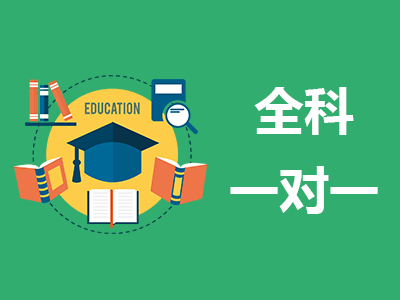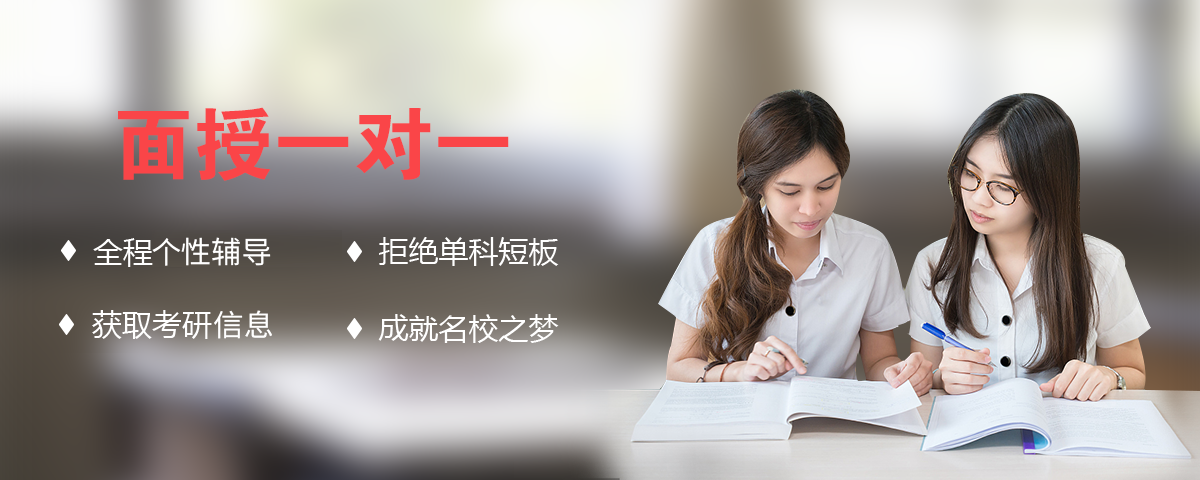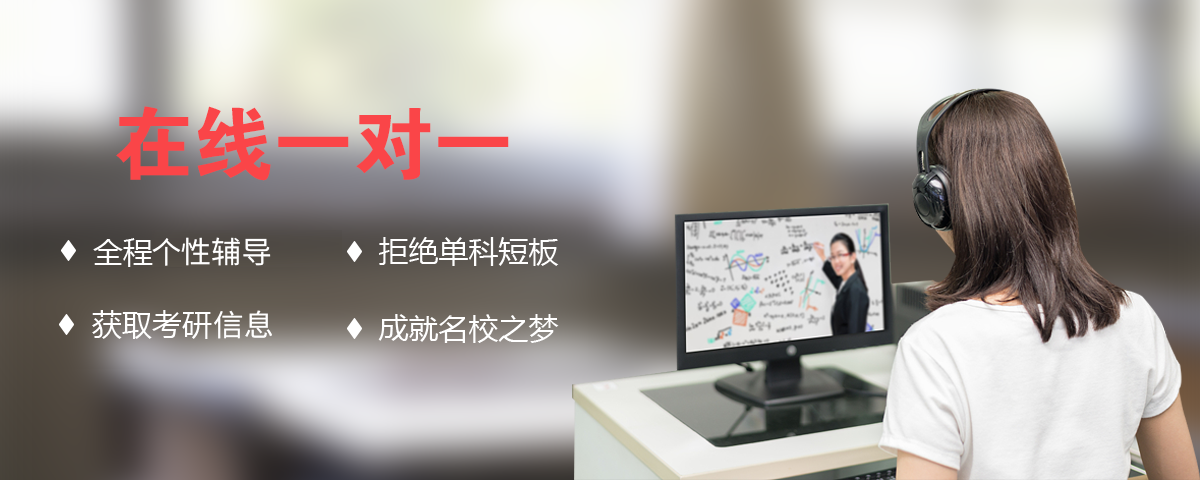
1.考生必须严格遵守各项考场规则。
(1)考生在考试开考15分钟后不得入场。
(2)交卷出场时间不得早于考试结束前30分钟。
(3)交卷结束后,不得再进考场续考,也不得在考场附近逗留或交谈。
2.答题前,应按准考证上的有关内容填写答题卡上的“考生姓名”“报考单位”“考生编号”等信息。
3.答案必须按要求填涂或写在指定的答题卡上。
(1)填涂部分应该按照答题卡上的要求用2B铅笔完成。如要改动,必须用橡皮擦干净。
(2)书写部分必须用(蓝)黑色字迹钢笔、圆珠笔或签字笔在答题卡上作答。字迹要清楚。
4.考试结束后,将答题卡装入原试卷袋中,试卷交给监考人员。
![]()
|
题型 |
英语知识运用 |
阅读理解 |
英译汉 |
写作 |
总计 |
||
|
Part A |
Part B |
Part A |
Part B |
||||
|
分值 |
10分 |
40 分 |
10 分 |
15分 |
10 分 |
15 分 |
100 分 |
|
得分 |
|
|
|
|
|
|
|
2016 年全国硕士研究生招生考试英语(二)
冲刺密押试卷
Section Ⅰ Use of English
Directions:
Read the following text. Choose the best word(s) for each numbered blank and mark A, B, C or D on the ANSWER SHEET. (10 points)
While western governments worry over the threat of Ebola, a more pervasive but far less harm- ful 1 is spreading through their populations like a winter sniffle: mobile personal technology.
The similarity between disease organisms and personal devices is 2 . Viruses and other para- sites control larger organisms, 3 resources in order to multiply and spread. Smartphones and other gadgets do the same thing, 4 ever-increasing amounts of human attention and electricity sup- plied 5 wire umbilici.
It is tempting to 6 a “strategy” to both phages and phablets, neither of which is sentient. 7 , the process is evolutionary, consisting of many random evolutions, 8 experimented with by many product designers. This makes it all the more powerful.
Tech 9 occurs through actively-learnt responses, or “operant conditioning” as animal be haviourists call it. The scientific parallel here also involves a rodent, typically a rat, which occupies a 10 cage called a Skinner Box. The animal is 11 with a food pellet for solving puzzles and punished with an electric shock when it fails.
“Are we getting a positive boost of hormones when we 12 look at our phone, seeking re- wards?” asks David Shuker, an animal behaviourist at St Andrews university, sounding a little like a man withholding serious scientific endorsement 13 an idea that a journalist had in the shower. Re- search is needed, he says. Tech tycoons would meanwhile 14 that the popularity of mobile devices is attributed to the brilliance of their designs. This is precisely what people whose thought processes have been 15 by an invasive pseudo-organism would believe.
16 , mobile technology causes symptoms less severe than physiological diseases. There are even benefits to 17 sufferers for shortened attention spans and the caffeine overload triggered by visits to Starbucks for the free Wi-Fi. Most importantly, you can 18 the Financial Times in places as remote as Alaska or Sidcup. In this 19 , a mobile device is closer to a symbiotic organism than a parasite. This would make it 20 to an intestinal bacterium that helps a person to stay alive, rather than a virus that may kill you.
| 1. [A] phenomenon 2. [A] striking 3. [A] relying 4. [A] taking over 5. [A] with 6. [A] point 7. [A] Instead 8. [A] which 9. [A] progress 10. [A] dangerous 11. [A] rewarded 12. [A] anxiously 13. [A] within 14. [A] support 15. [A] formed 16. [A] Surprisingly 17. [A] compensate 18. [A] share 19. [A] part 20. [A] adaptive |
[B] epidemic |
[C] issue |
[D] event |
Section Ⅱ Reading Comprehension
Part A
Directions:
Read the following four texts. Answer the questions below each text by choosing A, B, C or D. Mark your answers on the ANSWER SHEET. (40 points)
Text 1
Rarely have the Christmas results for Britain’s supermarkets been awaited with such anxiety. Most of them, especially the market leader, Tesco, struggled in 2014. The hard-discount stores, Aldi and Lidl, continued to undercut them, gobbling up market share, while falling food prices ate into their profits.
Asda’s boss, Andrew Clarke, has warned of more challenging times ahead. Yet the lesson from these results is clear. Grocers with a clearly defined position in the market will continue to prosper, but for those without one there is more pain to come. Thus Waitrose, for instance, has remained res- olutely and distinctly posh. It has refused to chase the upstart discounters by reducing prices, as mid-market rivals have done.
Natalie Berg of Planet Retail, a research organization argues that the key to survival in a fero- ciously competitive groceries market is to offer the customer a brand that is “clear, targeted and con- sistent.” Waitrose, at the top end of the market, does this well, as do Lidl and Aldi at the bottom. The rest are stranded in the middle, trying to be all things to all people. This week, for instance, As da, Sainsbury’s and Tesco announced further price cuts. That might fend off the discounters for a bit. It will also muddy perceptions of who their target customers really are.
But it is not all gloom for the supermarkets. A more clement economic environment should help all of them. Tumbling fuel prices and—a novelty, this—rising real wages will put more money in shoppers’ pockets. The results also demonstrate that supermarkets are rewarded for a strong inter- net presence. Again, Waitrose has done well here: grocery sales through its online service grew by 26% over the Christmas period compared with a year ago. Most of the supermarkets are trying out new digital gizmos to make shopping easier. Waitrose is experimenting with a home-scanning de- vice called Hiku. This will allow people to scan barcodes on Waitrose products at home to add them to their online shopping basket.
There are grounds for optimism even at Tesco, argues Bryan Roberts, an analyst at Kantar Re- tail. For a couple of years its stores in London have done better than those in the rest of the country. Store managers in the capital have enjoyed more autonomy to fill their shelves with products suited to the people who live or work in the local area. Devolution seems simple, but effective.
21. Which of the following is NOT Aldi and Lidi have done to most of Britain’s supermarkets?
[A] Undercut them.
[B] Ate into their profits.
[C] Gobbled up their market share.
[D] Made their food costs increase.
22. The clear lessen in Paragraph 2 means grocers should _______ .
[A] chase the upstart discounters
[B] have target market
[C] reduce prices
[D] have middle-market rivals
23. We can learn from Paragraph 3 that _______ .
[A] Asda is at the top end of the market
[B] Lidi and Aldi are in the middle of the market
[C] Waitrose will muddy its target customers
[D] Tesco is stranded in the middle of the market
24. The word “gizmos” (Para. 4) probably means _______ .
[A] technologies [B] means
[C] devices [D] products
25. It can be concluded from the last paragraph that _______ .
[A] devolution is an effective way to increase sales
[B] there is no reason for Tesco to be pessimistic
[C] Tesco should merge its stores in the rest of the country
[D] Tesco’s stores in London miss local trends
Text 2
For the past few months, artificial intelligence (AI) has been a much talked about topic in the worlds of both pop culture and science. Last November saw the release of Oscar-nominated and winning biopic, “The Imitation Game”, about the father of the modern computer, Alan Turing. Last month, another Hollywood film about clever robots, Chappie, hit theaters.
Is artificial intelligence a boon or does it spell doom for humans? In their book, authors Erik Brynjolfsson and Andrew McAfee, both of whom hail from MIT, US, could barely hide their excite- ment toward the rise of machines.
According to the authors, we are entering an age of accelerated development of artificial and robotic technology. “Digital machines have escaped their narrow confines and started to demonstrate broad abilities in pattern recognition, complex communication, and other domains that used to be exclusively human,” write the authors. “We’ve recently seen great progress in natural language pro- cessing, machine learning, computer vision, simultaneous localization and mapping, and many other areas.
“We’re going to see artificial intelligence do more and more, and as this happens costs will go down, outcomes will improve, and our lives will get better.” Already AI can help blind people see and deaf people hear. And wheelchairs have been invented that can be controlled by thoughts. We are going to witness more innovations and wonders made possible by AI, according to the authors.
However, not all are equally enthusiastic about AI. A February report from the Global Chal- lenges Foundation listed AI, alongside extreme climate change, nuclear war and ecological catastro- phe, as “risks that threaten human civilization”. Many preeminent scientists share the same concern. Stephen Hawking told the BBC last December that “the development of full artificial intelligence could spell the end of the human race.” “It would take off on its own, and redesign itself at an ever increasing rate,” he said: “Humans, who are limited by slow biological evolution, couldn’t compete, and would be replaced.”
Hawking’s worry echoed that of Tesla and SpaceX boss Elon Musk, who said in last October at an MIT conference that “we should be very careful about artificial intelligence. If I had to guess at what our biggest existential threat is, it’s probably that”.
26. It can be learned from Paragraph 1 that “The Imitation Game” _______ .
[A] is a science fiction movie
[B] is not a Hollywood film
[C] won Oscar-nomination
[D] is about clever robots
27. Which is NOT the ability of digital machines, according to Erik Brynjolfsson and Andrew McAfee?
[A] Natural language processing. [B] Intelligence production.
[C] Fingerprint recognition. [D] Simultaneous localization.
28. It cannot be inferred that artificial intelligence will _______ .
[A] complete more chores
[B] help cut down costs
[C] help deaf people hear
[D] control people’s thought
29. According to Stephen Hawking, _______ .
[A] AI is one of the risks that threaten human civilization
[B] the development of AI cannot threaten human race
[C] AI might be substituted for humans in the future
[D] AI would redesign itself at a slow rate
30. A suitable title for this text would be _______ .
[A] Bleak Future of AI
[B] Digital Future: Uncertain
[C] Bright Future of Digital Machines
[D] Doom for Humans in the Future
Text 3
In his “Odyssey”, Homer immortalized the idea of resisting temptation by having the protago nist tied to the mast of his ship, to hear yet not succumb to the beautiful, dangerous songs of the Sirens. Researchers have long been intrigued as to whether this ability to avoid, or defer, gratifica- tion is related to outcomes in life. The best-known test is the “marshmallow” experiment, in which children who could refrain from eating the confection for 15 minutes were given a second one. Chil- dren who could not wait tended to have lower incomes and poorer health as adults. New research suggests that kids who are unable to delay rewards are also more likely to become criminals later.
Recently, four researchers used data from a Swedish survey in which more than 13,000 children aged 13 were asked whether they would prefer to receive $140 now or $1,400 in five years’ time. About four-fifths of them said they were prepared to wait.
Unlike previous researchers, the authors were able to track all the children and account for their parental background and cognitive ability. They found that the 13-year-olds who wanted the smaller sum of money at once were 32% more likely to be convicted of a crime during the next 18 years than those children who said they would rather wait for the bigger reward. Individuals who are impatient, they believe, prefer instant benefits and are therefore less likely to be deterred by potential punish- ments.
But those who fret that a person’s criminal path is set already as a teenager should not despair. The four researchers offer a remedy. When the respondents’ education was included in the analysis, they found that higher educational attainment was linked to a preference for delayed gratification.
Educational attainment and patience are related either because patience helps students to do better or because schooling makes people more likely to postpone rewards. Fortunately, there is evidence in support of the latter theory. Francisco Perez-Arce of the RAND Corporation, a think-tank, interviewed around 2,000 applicants for Mexican universities. The students had similar credentials but some obtained admission through a lottery to a university that did not charge tuition fees, where- as the rest had to apply elsewhere. As a result, a higher proportion of lottery-winners than losers went to college. After a year, Mr. Perez-Arce found, the lottery-winners were more patient than the losers. Since the process was random, he concluded that higher education can make people place more weight on the future.
31. The “marshmallow” experiment is a test about_______ .
[A] accepting temptation
[B] avoiding outcomes
[C] deferring gratification
[D] eating the confection
32. All of the following make the new research differ from the previous ones EXCEPT _______ .
[A] the researchers tracked all the subjects
[B] the researchers surveyed a much wider range of children
[C] the researchers explained the children’s parental background
[D] the researchers considered the parents’ cognitive ability
33. It is believed that individuals who are impatient_______ .
[A] tend to get benefits at once
[B] are able to delay rewards
[C] would rather wait for the bigger reward
[D] are probably deterred by potential punishments
34 . People who fret that a person ’ s criminal path is set already can take the remedial action of _______ .
[A] keeping healthy
[B] attaining higher incomes
[C] receiving higher education
[D] avoiding punishments
35. It is concluded that educational attainment and patience are related because_______ .
[A] patience helps students to do better
[B] gratification is delayed by receiving higher education
[C] schooling makes people less likely to postpone rewards
[D] higher education can make people value the future more
Text 4
Ever since Muzak started serenading patrons of hotels and restaurants in the 1930s, piped-in music has been part of the consumer experience. Without the throb of a synthesiser or a guitar’s twang, shoppers would sense something missing as they tried on jeans or filled up trolleys. Special- ists like Mood Media, which bought Muzak in 2011, devise audio programmes to influence the feel of shops and cater to customers’ tastes. The idea is to entertain, and thereby prolong the time shop- pers spend in stores, says Claude Nahon, the firm’s international chief. Music by famous artists works better than the generic stuff that people associate with Muzak. The embarrassing brand name was dropped in 2013.
Online shopping is an under-explored area of merchandising musicology. A new study commis- sioned by eBay, a shopping website, aims to correct that. Some 1,900 participants were asked to simulate online shopping while listening to different sounds. Some results were unsurprising. The noise of roadworks and crying babies soured shoppers’ views of the products on offer. Chirruping birds encouraged sales of barbecues but not blenders or board games.
Sounds associated with quality and luxury seemed to be hazardous for shoppers’ wallets. The study found classical music and restaurant buzz caused them to overestimate the quality of goods on offer and to pay more than they should. That backs up earlier research which found that shoppers ex- posed to classical music in a wine store bought more expensive bottles than those hearing pop.
EBay wants consumers to avoid such unhealthy influences when shopping online. It has blend- ed birdsong, dreamy music and the sound of a rolling train—thought to be pleasant but not overly se- ductive—to help them buy more sensibly. Retailers could presumably counter by turning up the Chopin. “Classical music does seem to be the way to go” if your only interest is the narrow one of squeezing as much money as possible from your clientele, says the study’s author, Patrick Fagan, a lecturer at Goldsmiths, part of the University of London.
Few trad itional shops are likely to use that tactic. H&M, a clothes retailer, airs “trendy, up-tempo” music from new artists, while Nespresso’s coffee boutiques go for “lounge-y” sounds, says Mr. Nahon. Grocery stores, with a broad following, play top 40 hits. The tempo tends to be slower in the mornings, when shoppers are sparser and older, and becomes more quick and lively as the day goes on.
36. The brand name Muzak was dropped in 2013 because it _______ .
[A] was outdated
[B] was bought by Mood Media in 2011
[C] was often associated with generic music
[D] entertained customers better
37. The sound of _______may increase sales of board games_______ .
[A] roadworks
[B] crying babies
[C] chirruping birds
[D] classic music
38. The word “hazardous” (Para. 3) probably means_______ .
[A] safe [B] dangerous
[C] helpful [D] lucky
39. The sound which helps customers buy more sensibly_______ .
[A] belongs to classical music
[B] includes the sound of a rolling train
[C] sounds noisy and unpleasant
[D] is overly seductive
40. It can be inferred that a fashion shop should play________to attract customers.
[A] trendy and up-tempo music
[B] “lounge-y” music
[C] slow and tender music
[D] quick and lively music
Text 4
Ever since Muzak started serenading patrons of hotels and restaurants in the 1930s, piped-in music has been part of the consumer experience. Without the throb of a synthesiser or a guitar’s twang, shoppers would sense something missing as they tried on jeans or filled up trolleys. Special- ists like Mood Media, which bought Muzak in 2011, devise audio programmes to influence the feel of shops and cater to customers’ tastes. The idea is to entertain, and thereby prolong the time shop- pers spend in stores, says Claude Nahon, the firm’s international chief. Music by famous artists works better than the generic stuff that people associate with Muzak. The embarrassing brand name was dropped in 2013.
Online shopping is an under-explored area of merchandising musicology. A new study commis- sioned by eBay, a shopping website, aims to correct that. Some 1,900 participants were asked to simulate online shopping while listening to different sounds. Some results were unsurprising. The noise of roadworks and crying babies soured shoppers’ views of the products on offer. Chirruping birds encouraged sales of barbecues but not blenders or board games.
Sounds associated with quality and luxury seemed to be hazardous for shoppers’ wallets. The study found classical music and restaurant buzz caused them to overestimate the quality of goods on offer and to pay more than they should. That backs up earlier research which found that shoppers ex- posed to classical music in a wine store bought more expensive bottles than those hearing pop.
EBay wants consumers to avoid such unhealthy influences when shopping online. It has blend- ed birdsong, dreamy music and the sound of a rolling train—thought to be pleasant but not overly se- ductive—to help them buy more sensibly. Retailers could presumably counter by turning up the Chopin. “Classical music does seem to be the way to go” if your only interest is the narrow one of squeezing as much money as possible from your clientele, says the study’s author, Patrick Fagan, a lecturer at Goldsmiths, part of the University of London.
Few trad itional shops are likely to use that tactic. H&M, a clothes retailer, airs “trendy, up-tempo” music from new artists, while Nespresso’s coffee boutiques go for “lounge-y” sounds, says Mr. Nahon. Grocery stores, with a broad following, play top 40 hits. The tempo tends to be slower in the mornings, when shoppers are sparser and older, and becomes more quick and lively as the day goes on.
36. The brand name Muzak was dropped in 2013 because it _______ .
[A] was outdated
[B] was bought by Mood Media in 2011
[C] was often associated with generic music
[D] entertained customers better
37. The sound of _______may increase sales of board games_______ .
[A] roadworks
[B] crying babies
[C] chirruping birds
[D] classic music
38. The word “hazardous” (Para. 3) probably means_______ .
[A] safe [B] dangerous
[C] helpful [D] lucky
39. The sound which helps customers buy more sensibly_______ .
[A] belongs to classical music
[B] includes the sound of a rolling train
[C] sounds noisy and unpleasant
[D] is overly seductive
40. It can be inferred that a fashion shop should play________to attract customers.
[A] trendy and up-tempo music
[B] “lounge-y” music
[C] slow and tender music
[D] quick and lively music
Part B
Directions:
Read the following text and match each of the numbered items in the left column to its correspond- ing information in the right column. There are two extra choices in the right column. Mark your an- swers on the ANSWER SHEET. (10 points)
A Picasso painting valued at about $140 million is the centerpiece of a new type of auction at Christie’s, combining Modern and contemporary artworks spanning 100 years, that will kick-start its postwar and contemporary sales in New York in May.
Scheduled for May 11, “Looking Forward to the Past” is an evening sale of about 25 lots orga- nized by Loic Gouzer, of Christie’s postwar and contemporary art department. Mr. Gouzer was also the specialist responsible for Christie’s much-hyped “If I Live I’ll See You Tuesday” auction of 35 works by fashionable contemporary names, which raised $134.6 million last May.
“Traditionally, people would start by collecting Impressionist and Modern art, and then gradu- ally turn to contemporary,” Mr. Gouzer said. “Recently, we’re seeing the contrary. Collectors start with contemporary, and then they start to look for other works that have quality, relevance and fresh- ness.”
Picasso, who died at 91 in 1973, has nevertheless traditionally been included in auctions of Im- pressionist and Modern art. But Christie’s said that the broadening client base at the week of con- temporary art sales in New York was crucial in persuading an unidentified seller to come forward with Picasso’s 1955 canvas “Les Femmes d’Alger (Version ‘O’),” around which the auction house fashioned its “Looking Forward to the Past” sale. Inspired by Eugene Delacroix’s 1834 Orientalist masterpiece, “Women of Algiers,” this was one of a number of works Picasso produced in the 1950s and 1960s in response to earlier artists he admired. This particular painting was last seen on the mar- ket in November 1997, when it was bought by the London dealer Libby Howie, on the behalf of a client, for $31.9 million at Christie’s auction from the collection of the Americans Victor and Sally Ganz.
Christie’s new valuation of about $140 million on this superior Picasso ranks as one of the highest estimates ever put on an artwork at auction. Francis Bacon’s “Three Studies of Lucian Freud,” which sold for a record $142.4 million at Christie’s in November 2013, carried a presale es timate of more than $85 million. Christie’s has guaranteed the seller of “Les Femmes d’Alger (Ver sion ‘O’)” an undisclosed minimum price. It would not specify whether this guarantee had been funded by the auction house or by a third party.
Last week, Mr. Gouzer posted an image of a 1938 Picasso painting of Dora Maar on Instagram. That work will be in his sale with an estimate of more than $50 million. But there are still gaps, Mr. Gouzer said. “I’m still looking for a 1960s Carl Andre.”
|
[A] is an auction organized by Loic Gouzer. |
|
|
41. Looking Forward to the Past |
[B] is an evening sale of 35 contemporary works. |
|
42. Les Femmes d’Alger (Version ‘O’) |
[C] is Picasso’s 1955 painting valued at about $140 million. |
|
43. Women of Algiers |
[D] is Picasso’s 1938 painting estimated more than $50 million. |
|
44. Three Studies of Lucian Freud |
[E] is Eug e ne Delacroix’s 1834 Orientalist master- piece. |
|
45. Dora Maar |
[F] was produced by Francis Bacon in the 1950s and 1960s. |
|
[G] set a record of $142.4 million at Christie’s. |
Section Ⅲ Translation
46. Directions:
Translate the following text into Chinese. Write your translation on the ANSWER SHEET. (15 points)
Jobs’ genius for creating products and his marketing talent have long been hailed. All of that comes through in Becoming Steve Jobs, Schlender’s and Tetzeli’s new book.
They contend that Jobs was a far more complex and interesting man than the half-genius / half-jerk stereotype, and a good part of their book is an attempt to craft a more rounded portrait. What makes their book important is that they also contend—persuasively, I believe—that, the stereotype notwithstanding, he was not the same man in his prime that he had been at the beginning of his career. The inexperienced, impulsive, arrogant youth who co-founded Apple was very differ- ent from the mature and thoughtful man who returned to his struggling creation and turned it into a company that made breathtaking products while becoming the dominant technology company of our time. Had he not changed, they write, he would not have succeeded.
Section Ⅳ Writing
Part A
47. Directions:
Suppose you are applying for a volunteer for an international conference. Write an email to the committee to
1) express your interest to be the volunteer, and
2) show your skills that will help you for the volunteering. You should write about 100 words on the ANSWER SHEET.
Do not use your own name. Use “Li Ming” instead.
Do not write your address. (10 points)
Part B
48. Directions:
Write an essay based on the following chart. In your essay, you should
1) interpret the chart, and
2) give your comments.
You should write at least 150 words.
Write your essay on the ANSWE SHEET. (15 points)



























